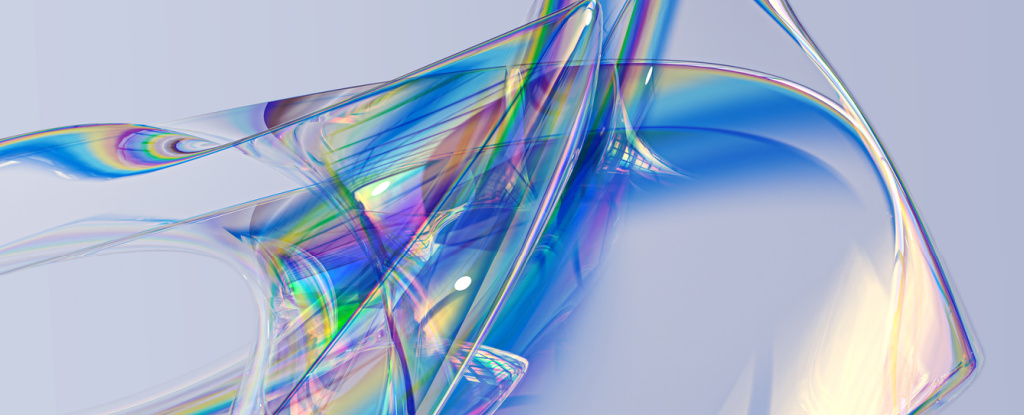Scientists have discovered an exception to a 200-year-old scientific law that governs how heat diffuses through solid materials.
Known as Fourier’s law, it describes how heat is transferred, or conducted, through solid materials. As molecules vibrate and electrons shuttle about, the heat diffuses from the hotter end of an object to the colder end, at a rate that is proportional to that temperature difference and the area through which the heat flows.
However, in the past few decades, researchers have found that on the nanoscale, this model of diffusion doesn’t work; Fourier’s law breaks down and no longer predicts how fast or slow heat will move through a solid material.
Polymer physicist Kaikai Zheng from the University of Massachusetts, Amherst and colleagues wondered if there might be similar exceptions to Fourier’s law to be found at the macroscale, in see-through materials such as translucent polymers and inorganic glasses.
Being translucent, these materials let some wavelengths of light pass through. Although the light doesn’t get totally absorbed like in opaque materials, it does scatter, bouncing off impurities in the material structure.
This led Zheng and colleagues to hypothesize that as well as heat diffusing through these solid materials, their translucence might also allow heat energy to travel through the materials in the form of thermal radiation as well. Radiant heat is carried through the air as electromagnetic waves, mainly infrared radiation, and an example is the heat we feel from the Sun’s rays.
“This research began with a simple question,” explains senior author Steve Granick, a materials scientist also at the University of Massachusetts, Amherst. “What if heat could be transmitted [through solids] by another pathway, not just the one that people had assumed?”
So the researchers clamped strips of test materials and suspended them, one by one, inside a custom-made vacuum chamber. The vacuum removed the possibility of heat dissipating from the materials through air.
“To find violations [in Fourier’s law] at macroscopic scales would be startling as this would go beyond standard textbook thinking,” the researchers write in their paper, reflecting on their thinking going into the experiments.
The team fired split-second pulses of laser at the materials to heat them up, and measured how heat spread through each of the materials using three methods: a temperature sensor placed directly on the material surface; measuring the color change of a temperature-sensitive coating painted onto the sample; and an infrared camera.
“The data show heating [occurred] faster than can be attributed to diffusion,” the researchers write, “indicating that radiation contributes significantly to heat flux during early times after a heat pulse, though the relative contribution of radiation diminishes as diffusion becomes dominant at later times.”
“It’s not that Fourier’s Law is wrong,” Granick clarifies, “just that it doesn’t explain everything we see when it comes to heat transmission.”
The team suggests that translucent materials radiate heat internally because structural imperfections act as heat absorbers and sources, allowing the heat to propagate from point to point rather than diffusing slowly.
They add that their findings could help engineers design new strategies for heat management in translucent materials, now that their study provides an expanded understanding of how heat spreads in solids – some 200 years after this phenomenon was first described in mathematical terms.
The study has been published in PNAS.





